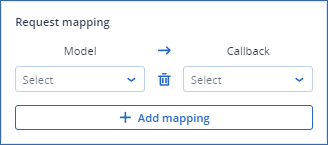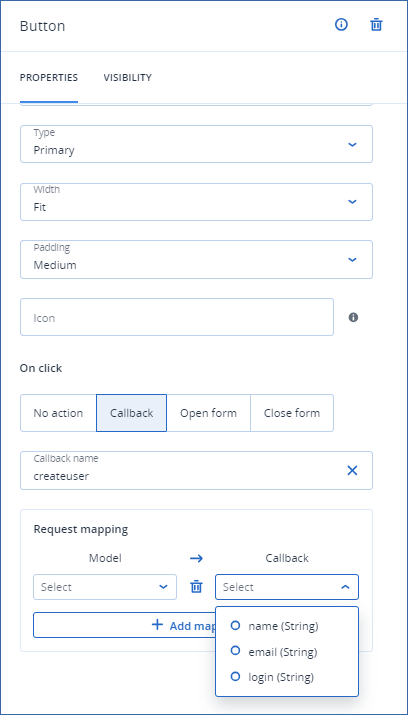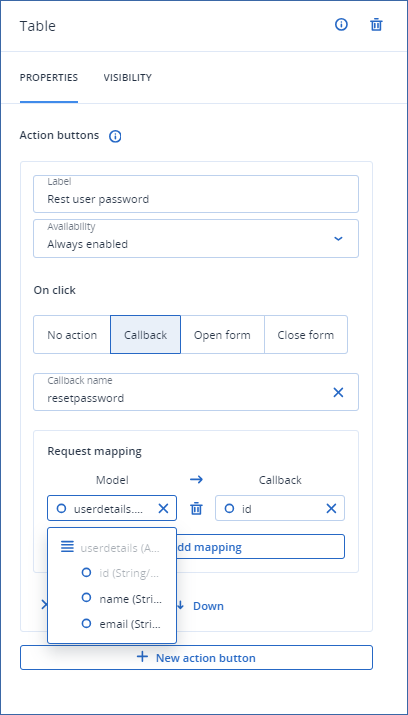Request mapping

To define request mapping
Click Add mapping.
Select a form model element from the left-side mapping dropdown list, and the callback request payload data item you want to map it to from the right-side mapping dropdown list.
Repeat for all the model properties you have to send in the payload.
Note
If you make a mistake, you can change the selected items or click the ![]() button to delete the mapping.
button to delete the mapping.
Example 1

In this example, a button element has been defined to trigger the createuser callback when clicked. The createuser callback has a request payload:
{
"type": "object",
"$schema": "http://json-schema.org/draft-04/schema",
"properties": {
"name": {
"type": "string"
},
"email": {
"type": "string"
},
"login": {
"type": "string"
}
}
}
A request mapping is therefore expected to map three string elements from the model form to the createuser callback request payload schema.
Example 2

In this example, a table has an action button defined to trigger the resetpassword callback when clicked. The resetpassword callback has a request payload:
{
"type": "object",
"$schema": "http://json-schema.org/draft-04/schema",
"properties": {
"id": {
"type": "string"
}
}
}
A request mapping is therefore expected to map one of the table elements from the model form to the resetpassword callback request payload schema.